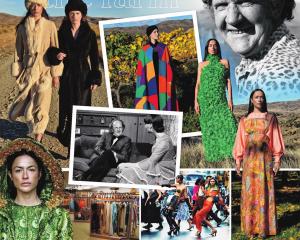
An upbringing on a Maniototo sheep and beef farm is influencing Lucy Girvan’s fashion design career, which has been inspired by her family’s homegrown fibre.
Miss Girvan, 22, has launched her label Eweburn Creek, creating a range of clothing and accessories made from 100% mid-micron wool grown about 10km from Ranfurly on her parents’ property.
Having always been creative, she entered the Hokonui Fashion Awards in Gore when she was still at school. Her rural background meant wool and what she could do with such a versatile fibre had always been at the back of her mind, Miss Girvan said.
While studying fashion design at Otago Polytechnic in Dunedin, she focused on sustainability. She saw wool, with its natural, renewable and biodegradable properties, as an opportunity to create fashion garments with a smaller ecological footprint.
Getting a job at Otago Knitwear in Dunedin also sparked an interest in getting her own family’s wool processed and used. She liked the versatility of wool and her aim was to make pieces which had a fashion twist.
It was a New Zealand-made story with the wool grown in Central Otago, spun in Wellington and then sent south to Dunedin to be made into garments.
She was also getting throws woven in Wellington from 16-micron merino wool, she said.
Eweburn Creek had been stocked at Lohi since Russ Haigh and Tania Murray Haigh opened their retail business in the main street of Ranfurly earlier this year, which was all about shining the light on slow fashion, homeware and on the wider Maniototo district while helping educate the next generation about a sustainable circular economy.
Since launching her label, she had particularly enjoyed returning to the home farm and looking at the sheep and seeing how the wool was grown. Having always helped out on the farm, she was very aware of the hard work that went in to producing a fleece.
While she believed wool was a very under-rated fibre, the movement towards natural fibres such as wool was definitely growing, she said. She was keen to educate people about wool and its properties.
She planned to keep increasing the amount of the farm’s wool clip that she used and introduce new colours. Her aim was to make garments to ‘‘throw on and still feel quite put together’’ and she would eventually like to have a shop and studio at home.












